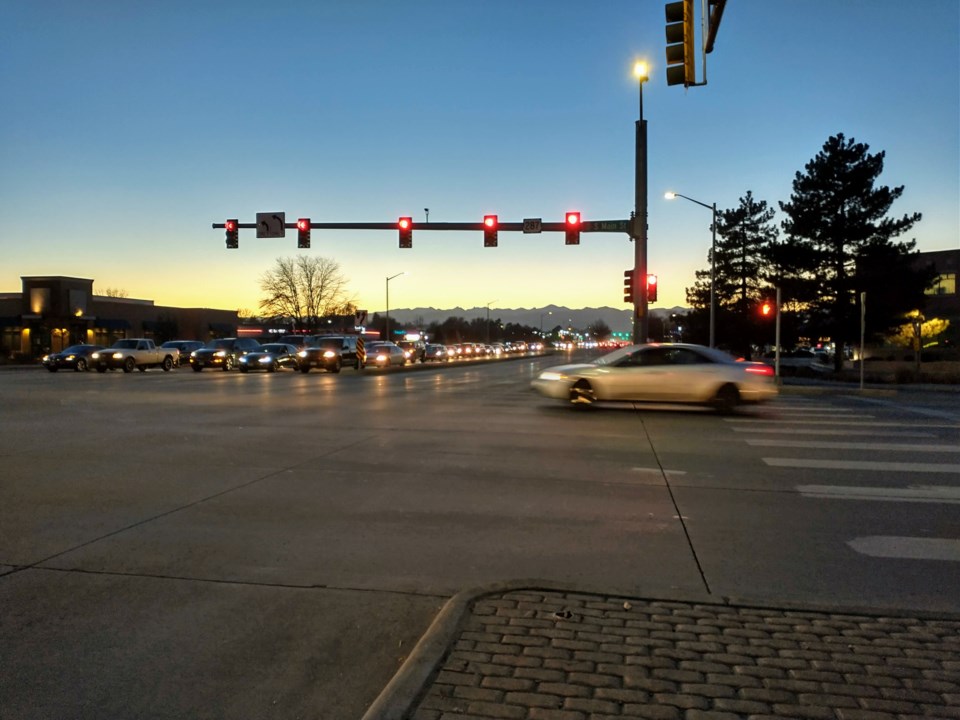Business owner and avid cyclist Heidi Quince said she likes the idea of reshaping U.S. 287 into a bus rapid transit corridor that cuts transportation woes along the 22-mile stretch between Longmont and Broomfield.
“Any kind of public transportation would be great and take a load off the traffic on there now,” said Quince, owner of Simply Bulk, a natural and organic grocer in downtown Longmont. “I think it would greatly improve things on the highway.”
Boulder County is embarking on a feasibility study of adding bus rapid transit — or BRT — between the Broomfield Park-n-Ride near U.S. 36 and Colo. 66 north of Longmont. The study will look at how BRT could address the growth along U.S. 287 and what other enhancements would be needed to help commuters, said Jeff Butts, multimodal planner for Boulder County.
The study also will tackle how to fund the $56 million proposal, Butts said Thursday night in a virtual kickoff to the study. Another meeting is scheduled for this spring.
Boulder County is following through on a 2014 RTD-sponsored study that said BRT would be the best way to handle the growth surrounding the highway, Butts said.
BRT buses are projected to serve 22 major and minor stops along the corridor and host 9,000 daily boardings, Butts said. A typical trip between Longmont and Broomfield would take almost 40 minutes, he said.
BRT would be fast because it uses expanded, dedicated lanes free of other traffic, said Nick Vanderkwaak, a planner with AECOM, a consulting firm working with Boulder County.
“While the rest of the traffic is congested, the bus continues to move,” Vanderkwaak said at Thursday’s virtual meeting. “BRT is faster, more reliable and can move more people. And we can connect riders to major regional destinations.”
Near-level boarding makes it easier for passengers to get on and off the buses, while riders will have access to ticket stations along the route, he said.
“We really are working with a blank slate with 287,” Vanderkwaak said. “This is going to be very exciting.”
Longmont is a huge fixture on the route, with many people going to homes and businesses in the city, Vanderkwaak said.
“There are a bunch of people going to Longmont for jobs and a bunch of people going to Boulder,” he said. “And there are riders going south to downtown Denver and people going to Loveland and Fort Collins.
“It’s a busy and dynamic route.”
The county’s U.S. 287 BRT proposal dovetails with RTD’s Colo. 119 BRT study that evaluated the viability of bus rapid transit between Boulder and Longmont, Phil Greenwald, the city’s transportation planning manager, said in an email.
Both projects come together in Longmont at the First Avenue and Main Street station — with the Colo. 119 BRT arriving from Boston Avenue, and the U.S. 287 buses traveling up Main Street from the south, Greewald said. Both routes would follow the same route north to a proposed Park-n-Ride just north of Walmart at Colo. 66 and U.S. 287, he said.
At First and Main, both BRT routes would use the proposed Coffman Street Busway, which is included in the 2018 Longmont Enhanced Multi-use Corridor Plan and is a few weeks away from initial kickoff of the final design, Greenwald said.
The Coffman Street Busway would allow bus routes to connect to the back of the First and Main station — along a new Coffman Street connection between Boston and First avenues — up to the current Eighth Avenue and Coffman bus stop, bypassing the section of Main Street from First to Ninth avenues.
“So… by moving the bus routes from Main Street to Coffman Street, Longmont is in a good position to provide space for future bus rapid transit projects, while also being able to accommodate more pedestrian traffic on downtown Main Street,” Greenwald said.



